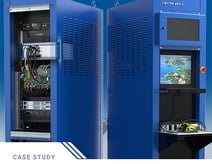- What is the expected volume of products over the product life cycle? In this case, you may need to communicate with your test equipment vendors. This is probably your biggest long-term strategy. The volume of product tested and the expected number of operations and measurements made help determine the type of instrumentation, switching subsystem, test fixturing, and so on.
- For example, if each test cycle uses a multiplexer 100 times and the relays are rated for 10,000,000 cycles, you can test approximately 100,000 PCBs before the multiplexer may fail. So, work with your test equipment vendors to select the right products to ensure that your test systems remain reliable. In the case of switching, this could mean selecting a more robust multiplexer, or ensuring that the vendor has adequate diagnostic tools, and you create a maintenance schedule to guarantee maximum test system up time.
- Is there a need to allow for expansion in the future of this test system? Are there other products in the pipeline that could be tested on this system with little or no expansion? This is probably the most critical in defense. After all, their manufacturing strategy is usually a medium volume throughput, medium to high mix of products. Your test system might serve testing multiple units under test (UUTs) in production, but your test system design might be deployed to depot repair sites, where multiple test programs are the norm.
- Expansion could mean extra PXI slots or added PXI/LXI modular chassis, free space for other instruments and extra connections on any mass interconnect to address new instruments in the future.
- Don’t forget the limitations of your test budget. If engineering or sales want to prepare for future test programs, ask for the money now!
The correct choice of platform is crucial if future flexibility and scalability of your automated test system may be required, and industry-standard architectures will provide optimum longevity and reliability due to their continual maintenance by dedicated consortiums and the breadth of support among leading test & measurement vendors. The following video will provide more guidance on choosing the most effective test platform for your applications, with an emphasis on switching systems - the foundation of most test systems.
Check out our video "Automated Switch System Platforms Explained"
After you watch the video above, take a look at our infographic that details the differences between PXI and LXI testing platforms.
RELATED RESOURCES
 Say you are a test engineering manager in the automotive industry. If you are testing active safety features like anti-lock brakes (ABS) or a collision avoidance system (CAS), and because of inadequate testing, a vehicle crashes and takes lives and property, then the lawyers get involved as lawsuits against the manufacturer cost time and millions of dollars. Can you see why your test strategy must be comprehensive enough and fast enough to provide the most accurate test at the lowest cost?
Say you are a test engineering manager in the automotive industry. If you are testing active safety features like anti-lock brakes (ABS) or a collision avoidance system (CAS), and because of inadequate testing, a vehicle crashes and takes lives and property, then the lawyers get involved as lawsuits against the manufacturer cost time and millions of dollars. Can you see why your test strategy must be comprehensive enough and fast enough to provide the most accurate test at the lowest cost? Your team must understand:
Your team must understand:




